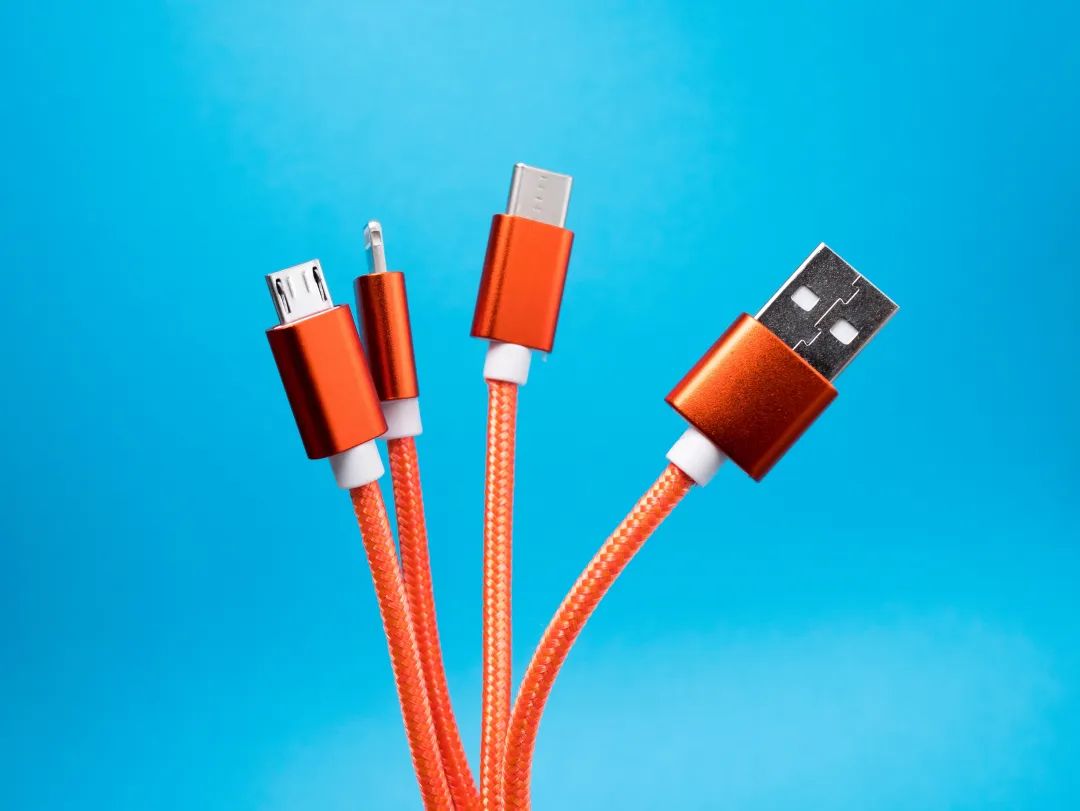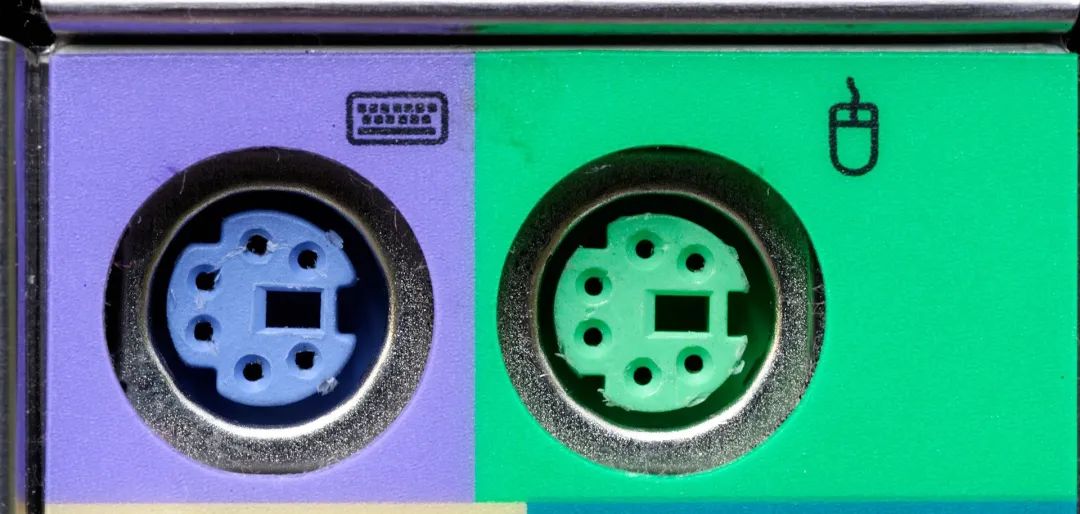

You might have fainted by now. Actually, as a human being, it's normal not to know. After all, not all of us are tech-nerds who spend our days plugged into our gadgets, and not all of us care about issues that are mostly trivial.
In September, the European Commission unveiled a new legislative proposal that aims to unify the types of charging ports for portable electronic devices such as smartphones and tablets within two years, with USB-C ports becoming the common standard for electronic devices across the EU. In October, Greg Joswiak, Apple's vice president of worldwide marketing, said in an interview that Apple would "have to" use USB-C on the iPhone.
It seems that in the future, as long as the old Micro USB is slowly retired, the phone charging port will be unified into USB-C. And USB-C has video capability, so can we ditch the other cables and replace them all with USB-C?
Probably not, at least not with a single USB-C cable. At this stage, when all ports are unified into USB-C, we may face an unexpected problem - the USB interface standard is too messy!
Universal Serial Bus
When USB ports were first introduced, no one associated them with chaos. The interface, called Universal Serial Bus, was born to be unified. Before the advent of USB, a range of computer peripherals, such as mouse, keyboard, printer, camera, etc. used different interface standards when connecting to the computer. People needed a unified interface to change this "messy" dilemma.

In 1995, seven companies, including IBM, Intel, and Microsoft, jointly established the USB standard and the USB Developer
Forum (USB-IF) to facilitate the process of connecting personal computer peripherals. This interface can transmit signals as well as electricity. In the original USB 1.0 standard, there were only two USB ports, Type-A for connecting computers and Type-B for connecting computer peripherals. At the time, the USB standard was not perfect enough to be widely used in the market. It wasn't until 1998, when USB 1.1 came out, that the USB standard began to spread.
In April 2000, the USB 2.0 standard came out. The standard not only increases the USB data transfer speed from the previous 12 Mbps to 480 Mbps, but also introduces the Mini-USB port, reducing the size of the USB port for portable devices. In 2007, they introduced an even smaller Micro-USB port, just 1.8mm thick, in response to the trend of thinner and more portable electronic devices.
By 2008, there were 6 billion USB ports around the world. USB seems to be able to connect to almost any computer peripheral, except that the display requires too much data bandwidth. During these eight years, personal computers also developed rapidly, and the USB interface speed of 480 Mbps gradually became inadequate. The USB 3.0 standard was born, which added a few extra pins inside the USB port to transfer data, thus increasing the USB port speed to 5 Gbps. The standard also changed the color of the plastic in the port from the original white to blue (Pantone 300C) to distinguish it from the original USB 2.0 standard.
Up until now, everything seemed to be working fine, and the USB port served its purpose pretty well -- until the USB 3.1 standard came out in 2013.
The standard of confusion
In 2013, the USB 3.1 standard was released, increasing the maximum USB speed to 10 Gbps. Standard The highest USB standard is renamed USB 3.1 Gen 2 and the original USB 3.0 port is renamed USB 3.1 Gen 1. The plastic sheet in the USB 3.1 Gen 2 port was changed from blue to light blue for differentiation. USB-IF doesn't seem to be trying to distinguish between the two standards, either as a name or as a color identifier.
The USB-C interface standard came out in 2014. USB-C no longer distinguishes between front and back and is small enough to be used on portable devices, which is currently the most common port on smartphones. However, USB-C is just a physical port, and the USB standard used on different USB-C ports is not fixed, which foreshadows the "same port, different functions" mess.
In 2017, the USB port standard was upgraded to USB 3.2, the latest version of which can transfer data at a rate of 20 Gbps -- which is a good thing, but the naming standard in USB 3.2 is pretty jaw-dropping:
Renamed USB 3.1 Gen 1 (aka USB 3.0) to USB 3.2 Gen 1 with a maximum speed of 5 Gbps;
Renamed USB 3.1 Gen 2 to USB 3.2 Gen 2 with a maximum speed of 10 Gbps and added USB-C support for this mode;
The newly added transfer mode is USB 3.2 Gen 2 x 2, with a maximum speed of 20 Gbps. This mode supports only USB-C, not the traditional USB Type-A port.

What a mess!
Despite its confusing name, USB port speeds have actually improved over the years. Usb-if wants to use USB to transmit video signals. They want to integrate the DisplayPort interface (DP interface) into USB-C. Let the USB data cable really realize a wire transmission all signals.
But USB-C is just a physical interface, and there's no telling what protocol is running on it. In addition to the original DP, USB-C can transmit signals in MHL, Thunderbolt, HDMI, and VirtualLink modes. To make matters worse, there are several versions of each protocol that can be transferred over USB-C, each with more or less different versions:
The DP was DP 1.2, DP 1.4, and DP 2.0 (now DP 2.0 has been renamed DP 2.1);
There are MHL 1.0, MHL 2.0, MHL 3.0 and superMHL 1.0.
Lei Li 3 and Lei Li 4 (40 Gbps data bandwidth);
HDMI is only HDMI 1.4b (HDMI interface itself is also very confusing, want to speak clearly, may need to write another article);
VirtualLink is also available only in VirtualLink 1.0.
Also, USB-C cables don't necessarily support all of these protocols, and the standards supported by computer peripherals vary.
On September 3, 2019, the USB-IF announced the USB4 standard. The USB4 interface is developed based on Lei Li protocol and has a data bandwidth of 40 Gbps. Only USB-C interface can be used. But the naming of USB 2.0 and USB 3.2 did not change, and the USB confusion reached its peak at this point. This muddled interface naming standard is so confusing that even Intel experts, let alone hobbyists, can't remember its name.
This is a late simplification
On October 18, the USB-IF announced version 2.0 of the USB4, which allows the USB port to transfer data at 80 Gbps. Usb-if seems to have found some "minor" issues with the naming of USB ports and has finally simplified the way it is named.
The new USB port has only one physical port, USB-C, and is named after the cable transmission bandwidth:
USB 3.2 Gen 1 renamed USB 5Gbps, bandwidth 5Gbps;
USB 3.2 Gen 2 renamed USB 10Gbps, bandwidth 10Gbps;
USB 3.2 Gen 2 x 2 renamed USB 20Gbps, bandwidth 20Gbps;
The original USB4 was renamed USB 40Gbps with a bandwidth of 40Gbps.
The new standard is called USB 80Gbps and has a bandwidth of 80Gbps.
As for the previous USB 2.0 and USB 1.0, USB-IF believes that these two ports are too old to be renamed. In addition to data bandwidth, USB ports must also specify how much power they can transmit -- and only in 60W and 240W.
The naming of USB is finally no longer confusing. So now all I have to do is grab a USB 240W/80Gbps cable and I'll be all right?
Unfortunately, no. In addition to the standard USB-C specification published by USB-IF, some vendors are privately modifying the USB-C interface. For example, some phone manufacturers change the definition of the pin inside the USB-C port in order to increase the charging power of the phone. When charging using the universal USB port, these phones may lose the quick-charge function.
And there's another problem with high-power, high-transfer USB cables: they're expensive. When the signal transmission bandwidth of the cable rises, the manufacturing requirements for the cable will increase. The price of USB 40Gbps cable is not cheap, and the cost of a data cable of more than 1 meter can only reach several hundred yuan. Not to mention the USB 80Gbps that hasn't even hit the market yet. And these high-spec cables are thick, stiff, and poor portability.
USB unified all the ports, this is a beautiful vision, but it also brings an unprecedented problem - the same interface, different functions. Pull out a USB-C cable, and it could be running a protocol from the two-year-old Lei Li 4, or USB 2.0 (or High Speed) more than 20 years ago. Different USB-C cables may be different on the inside, but there's little difference on the outside.
So even if we unified the shape of all computer peripherals into USB-C, the tower of Babel might not really be built.
But at least it's better than not having the same physical shape of the interface and not connecting at all.
By continuing to use the site you agree to our privacy policy Terms and Conditions.